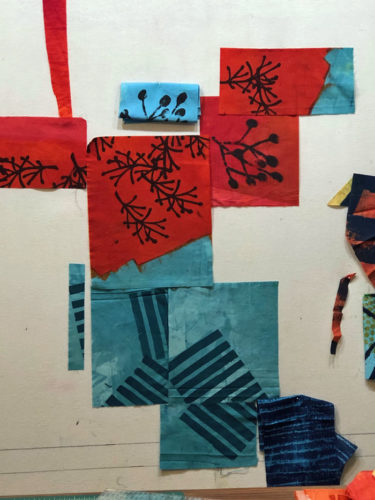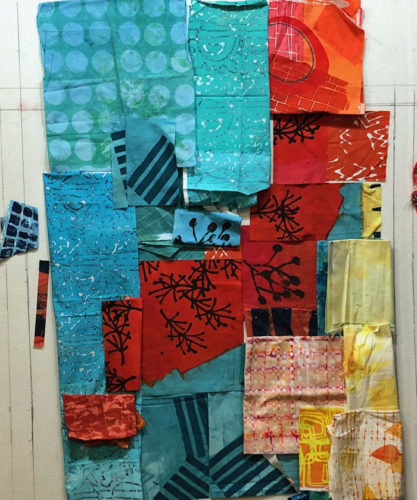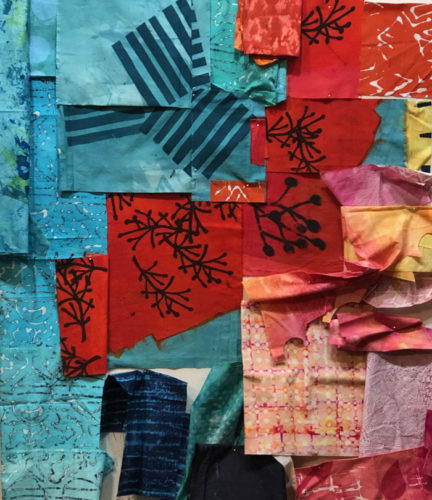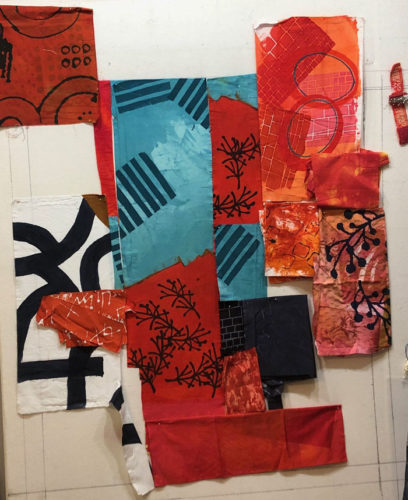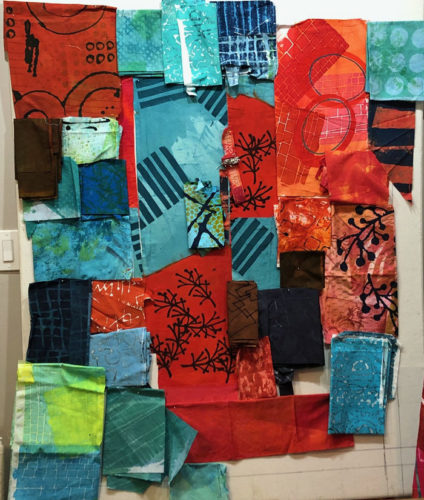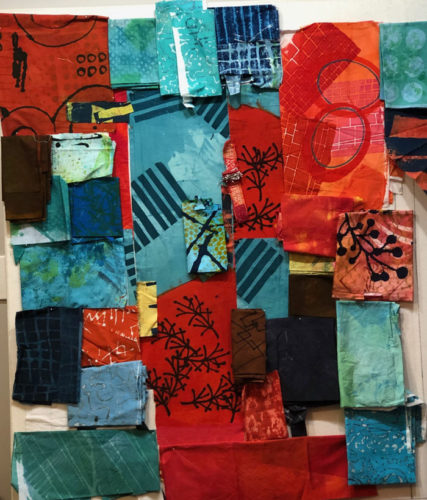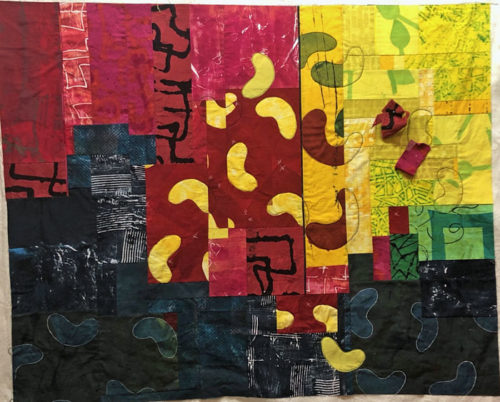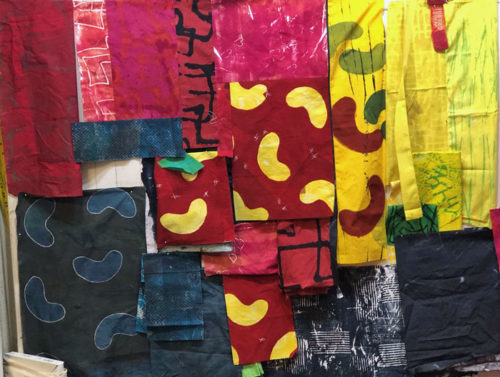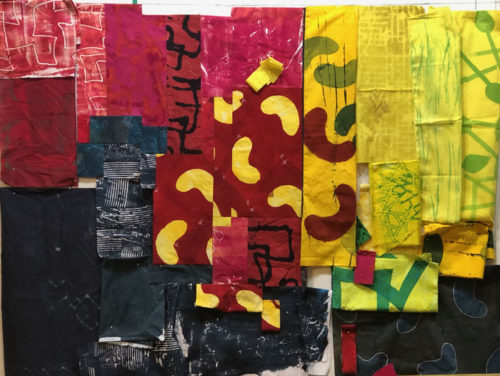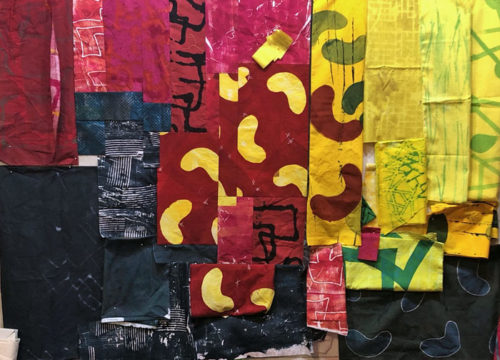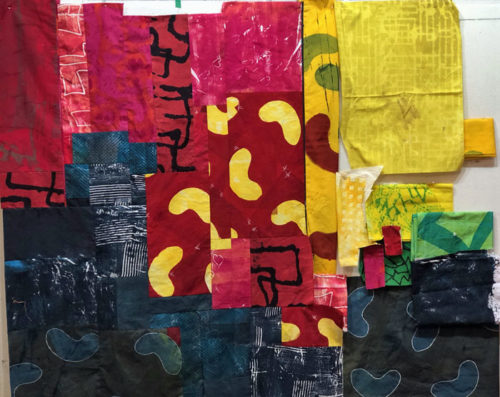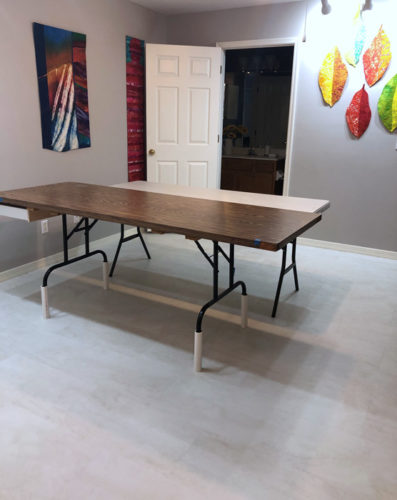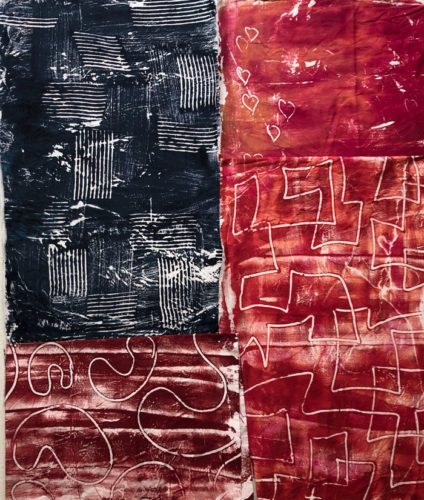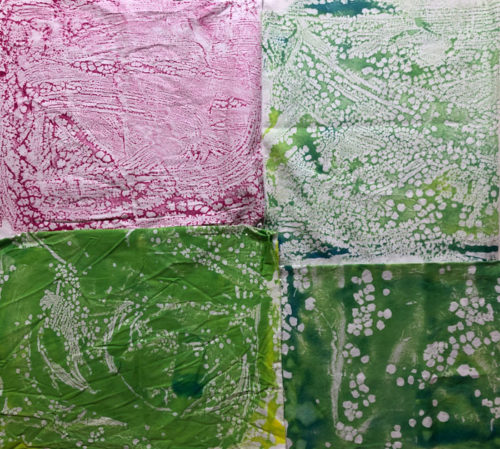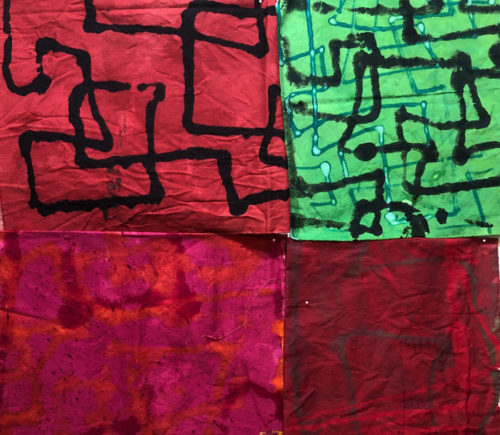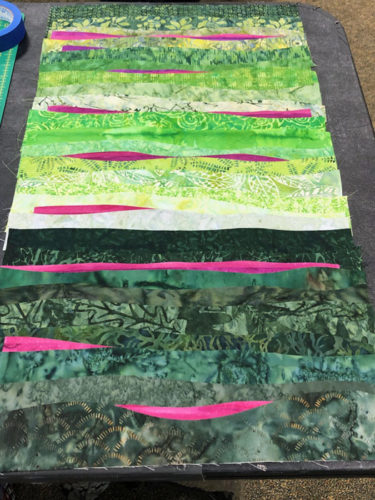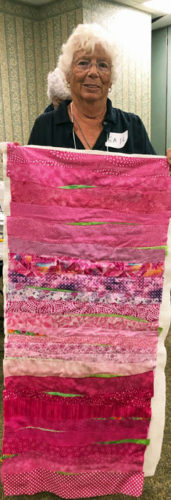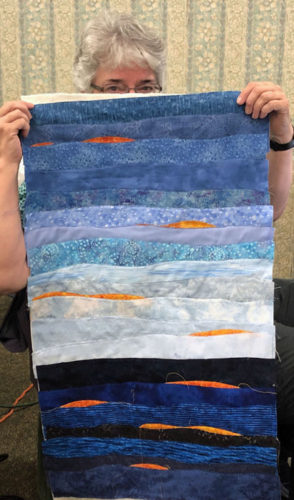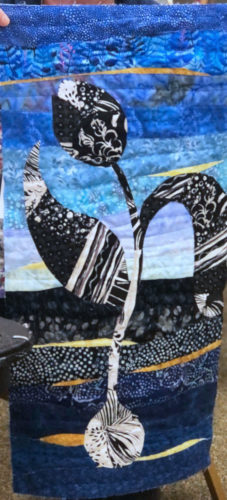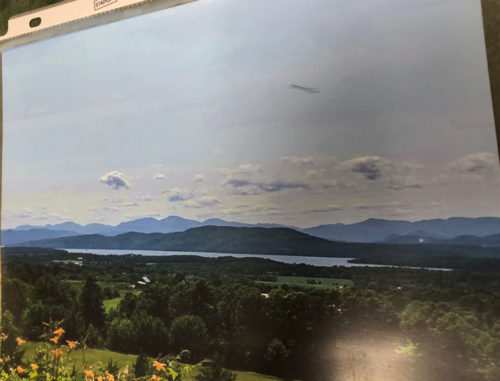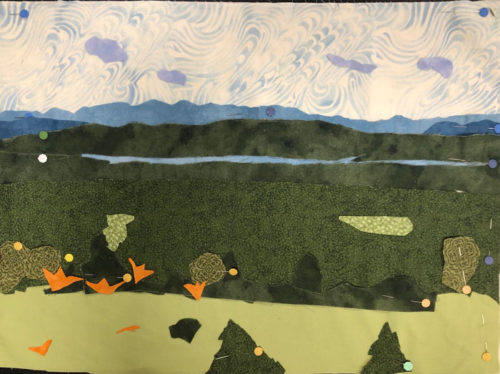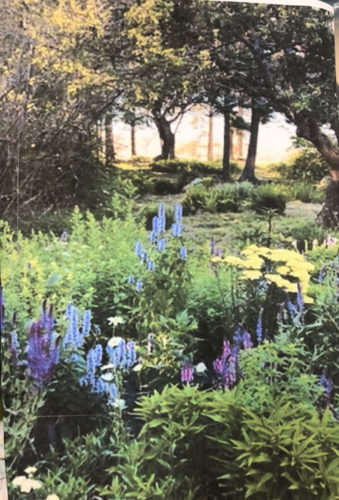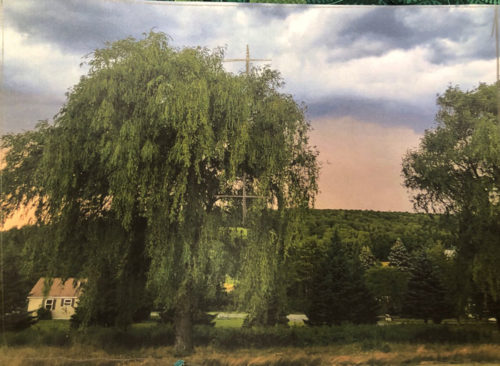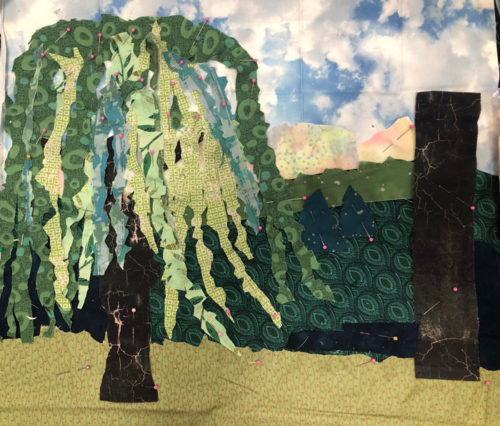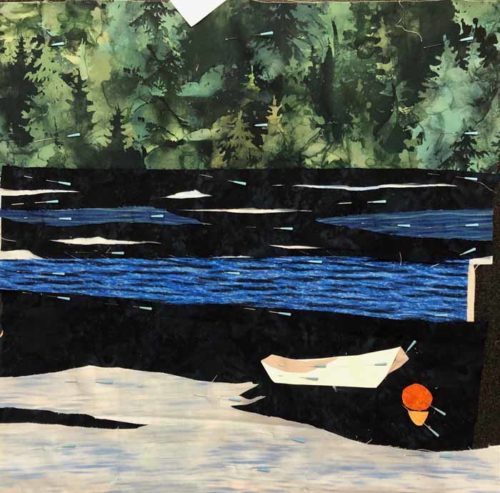If you’re anywhere near Tequesta/Jupiter, FL you really owe it to yourself to check out the Elegant Threads exhibit at the Lighthouse Art Center. As the name implies, the exhibit includes wearable art, but also 3D fiber art, jewelry, accessories, and some large invitational pieces.
My favorite piece was this quilt by Bisa Butler. Her work is all over the internet, so perhaps you’ve seen it. This was my first time to see one of her pieces in person and it did not disappoint. This piece is called Mighty Gents.
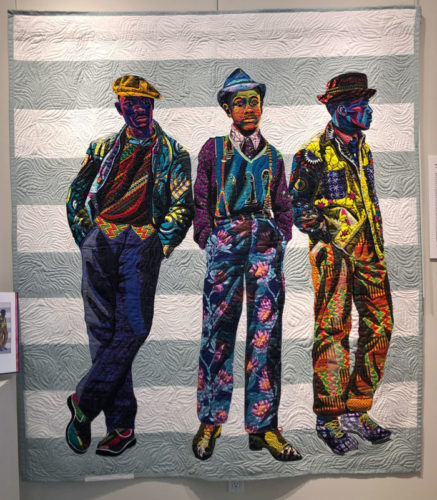
Don’t you love their body language?
Here’s a detail shot. (Slightly distorted, since I was standing close and looking up at it.)

There were many wonderful wearable garments on display. (Some more wearable than others.) This felted piece was made by Charity Van de Meer Musma, and is called Mysterious Bride.
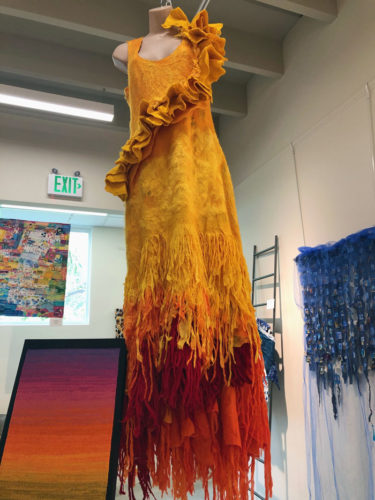
Amy Blicher calls her quilted and painted red coat Migraine.

And her yellow coat is called Daisies.
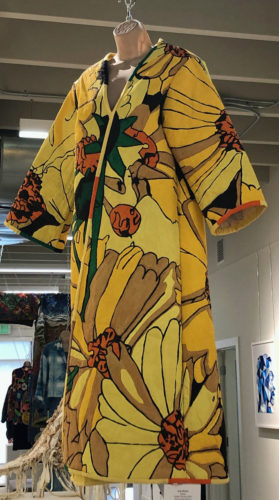
The wearables were hung from the ceiling or displayed on mannequins. It was a very nice presentation.
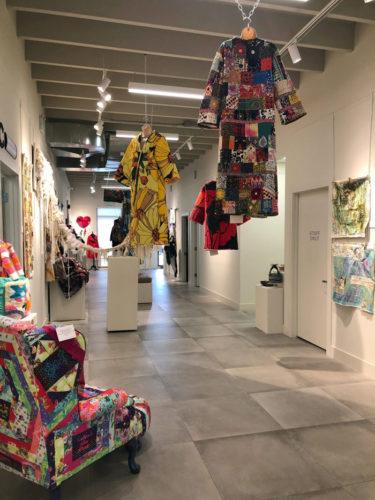
These are just a SMALL sampling of what’s on display. See it for yourself, if you can. It will be on display through December 2, 2023. (And, there’s a fashion show in November, if you can handle the $100 ticket price.)
In my next post, I’ll show you another VERY interesting piece on display in this exhibit.
Ellen Lindner

